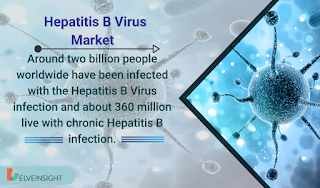Athlete's Foot Market Scenario, Market Report 2030
DelveInsight’s ‘Athletes foot Market Insights, Epidemiology and Market Forecast-2030’ report delivers an in-depth understanding of the Athlete’s foot, historical and forecasted epidemiology as well as the Athlete’s foot market trends in the United States.

The Athlete’s foot market report provides current treatment practices, emerging drugs, Athlete’s foot market share of the individual therapies, current and forecasted Athlete’s foot market Size from 2017 to 2030. The Report also covers current Athlete’s foot treatment practice/algorithm, market drivers, market barriers and unmet medical needs to curate best of the opportunities and assesses underlying potential of the market.
Geography Covered
• The United States
Study Period: 2017–2030
Athlete’s foot Disease Understanding and Treatment Algorithm
Athlete’s foot Overview
Athlete's foot, also known as Tinea pedis, is a cutaneous fungal infection caused by a dermatophyte infection. It is characterized by itching, flaking, and fissuring of the skin. It may manifest in three ways: the skin between the toes may appear macerated (white) and soggy; the soles of the feet may become dry and scaly; the skin all over the foot may become red, and vesicular eruptions may appear.
Three groups of fungal pathogens, referred to as dermatophytes, have been shown to cause tinea pedis: Trichophyton sp, Epidermophyton sp, and Microsporum sp. The disease manifests as a pruritic, erythematous, scaly eruption on foot and depending on its location, three variants have been described: interdigital type, moccasin type, and vesiculobullous type.
Athlete’s foot Diagnosis
Tinea pedis infections are typically easy to distinguish and diagnose. However, complete identification of the causative fungi should be established to confirm a diagnosis and ensure proper treatment. Diagnosis of tinea pedis is based on history and clinical appearance of the feet in addition to direct microscopy of a potassium hydroxide (KOH) preparation. Cultures or histological examinations are rarely required. A Wood's lamp is not usually helpful in diagnosing tinea pedis but can be used to rule out other diagnoses like infection with Malassezia furfur or erythrasma—Malassezia furfur and Corynebacterium minutissimum both fluoresce under ultraviolet light while other common dermatophytes do not.
Athlete’s foot Treatment
It covers the details of conventional and current medical therapies available in the Athlete’s foot market for the treatment of the condition. It also provides the treatment guidelines and algorithm in the United States
The DelveInsight Athlete’s foot market report gives a thorough understanding of Athlete’s foot by including details such as disease definition, symptoms, causes, pathophysiology, and diagnosis.
Athlete’s foot Epidemiology
The Athlete’s foot epidemiology division provide the insights about historical and current Athlete’s foot patient pool and forecasted trend for the United States. It helps to recognize the causes of current and forecasted trends by exploring numerous studies and views of key opinion leaders. This part of the DelveInsight report also provides the diagnosed patient pool and their trends along with assumptions undertaken.
Key Findings
The disease epidemiology covered in the report provides historical as well as forecasted Athlete’s foot epidemiology [segmented as Diagnosed Incident cases of Athlete’s foot and Incident cases of Athlete’s foot by subtype] scenario of Athlete’s foot in the United States from 2017 to 2030.
Request for sample pages: https://www.delveinsight.com/sample-request/athletes-foot-market
Athlete’s foot Drug Chapters
Drug chapter segment of the Athlete’s foot report encloses the detailed analysis of Athlete’s foot marketed drugs and late stage (Phase-III and Phase-II) pipeline drugs. It also helps to understand the Athlete’s foot clinical trial details, expressive pharmacological action, agreements and collaborations, approval and patent details, advantages and disadvantages of each included drug and the latest news and press releases.
Athlete’s foot Marketed Drugs
Luliconazole: Bausch Health
Luliconazole is a novel imidazole antifungal. Luliconazole is uniquely characterized by its R-enantiomer side chain in addition to one chiral center. The addition of an imidazole moiety into the ketene dithioacetate structure of the compound augments its ability to target filamentous fungi, such as dermatophytes, without compromising its broad-spectrum antifungal activity. Luliconazole has been shown to have antifungal activity against dermatophytes and Candida in vitro, and has been clinically assessed for the treatment of tinea pedis, cruris, and corporis.
Products detail in the report…
Athlete’s foot Emerging Drugs
SB208: Novan
SB208, a nitric oxide-releasing topical drug candidate, is in development for the treatment of fungal infections of the skin and nails, such as tinea pedis and onychomycosis. The active ingredient in the silicone-based gel of SB208 is NVN1000, a polysiloxane macromolecule that stores nitric oxide on the polymer backbone and has demonstrated broad-spectrum anti-fungal activity in vitro. Nitric oxide plays a vital role in the natural immune system response against microbial pathogens and is a critical regulator of inflammation.
Products detail in the report…
Athlete’s foot Market Outlook
The Athlete’s foot market outlook of the report helps to build the detailed comprehension of the historic, current and forecasted Athlete’s foot market trends by analyzing the impact of current therapies on the market, unmet needs, drivers and barriers and demand of better technology.
This segment gives a thorough detail of Athlete’s foot market trend of each marketed drug and late-stage pipeline therapy by evaluating their impact based on annual cost of therapy, inclusion and exclusion criteria’s, mechanism of action, compliance rate, growing need of the market, increasing patient pool, covered patient segment, expected launch year, competition with other therapies, brand value, their impact on the market and view of the key opinion leaders. The calculated market data are presented with relevant tables and graphs to give a clear view of the market at first sight.
According to DelveInsight, Athlete’s foot market in the United States is expected to change with a CAGR of 4.20% in the study period 2017–2030.
Key Findings
This section includes a glimpse of the Athlete’s foot market in the United States.
The United States Market Outlook
This section provides the total Athlete’s foot market Size and market Size by therapies in the United States.
Request for sample pages: https://www.delveinsight.com/sample-request/athletes-foot-market

Comments
Post a Comment